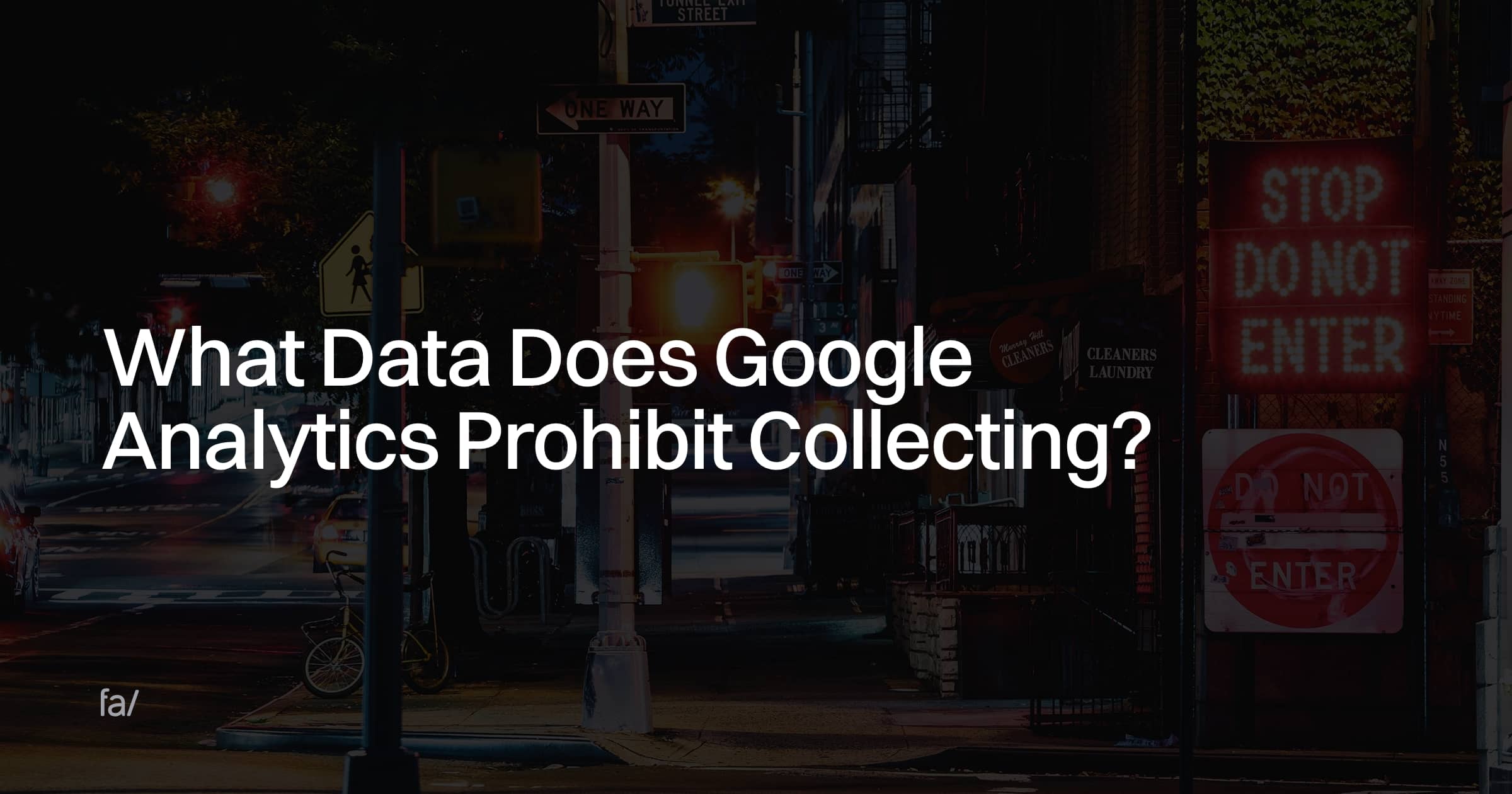Ultimate Frequently Asked Question: What Data Does Google Analytics Prohibit Collecting?
Ultimate Frequently Asked Question: What Data Does Google Analytics Prohibit Collecting?
Blog Article
Grasping the Art of Conquering Information Collection Limitations in Google Analytics for Better Decision-Making
In the world of digital analytics, the capacity to remove meaningful understandings from data is extremely important for notified decision-making. By employing sophisticated techniques and strategic techniques, companies can raise their data quality, unlock hidden understandings, and lead the way for more reliable and enlightened choices.
Information Top Quality Evaluation
Information top quality assessment entails examining different facets such as precision, efficiency, uniformity, and timeliness of the information. One vital facet to take into consideration is information precision, which refers to exactly how well the information shows the true worths of the metrics being gauged.
Completeness of data is one more critical aspect in evaluating data high quality. It entails ensuring that all essential data factors are accumulated which there are no voids in the information. Incomplete data can skew evaluation results and prevent the capability to get an extensive sight of customer actions or website performance. Consistency checks are also vital in information quality analysis to recognize any disparities or abnormalities within the information collection. Timeliness is similarly important, as outdated data might no more be appropriate for decision-making procedures. By focusing on data high quality assessment in Google Analytics, companies can enhance the reliability of their analytics records and make even more educated choices based upon accurate insights.
Advanced Tracking Techniques
Utilizing sophisticated monitoring techniques in Google Analytics can significantly improve the deepness and granularity of information collected for even more thorough analysis and understandings. One such strategy is event monitoring, which enables the monitoring of particular communications on an internet site, like clicks on buttons, downloads of files, or video clip views. By carrying out occasion monitoring, businesses can acquire a deeper understanding of individual habits and engagement with their on the internet material.
In addition, custom-made dimensions and metrics provide a method to tailor Google Analytics to details company needs. Custom-made dimensions allow for the development of brand-new information factors, such as user duties or customer sections, while custom metrics allow the monitoring of unique efficiency indicators, like revenue per customer or ordinary order value.
Additionally, the use of Google Tag Manager can enhance the implementation of monitoring codes and tags across a website, making it simpler to take care of and release innovative monitoring setups. By taking advantage of these sophisticated monitoring techniques, services can open beneficial understandings and enhance their on-line techniques for much better decision-making.
Custom-made Dimension Application
To boost the deepness of data collected in Google Analytics past innovative monitoring techniques like occasion tracking, organizations can implement custom-made measurements for even more customized understandings. Custom dimensions allow companies to define and collect details data points that are appropriate to their unique goals and objectives (What Data Does Google Analytics Prohibit Collecting?). By designating custom-made measurements to different elements on an internet site, such as user interactions, demographics, or session details, services can get a more granular understanding of exactly how individuals engage with their on-line residential or commercial properties

Attribution Modeling Strategies
By employing the ideal attribution version, businesses can accurately attribute conversions to the appropriate touchpoints along the client journey. One common acknowledgment version is the Last Interaction model, which provides credit scores for a conversion to the last touchpoint a user connected with before transforming.

Information Experiencing Avoidance
When dealing with large volumes of information in Google Analytics, conquering data sampling is important to guarantee precise understandings are obtained for educated decision-making. Data sampling happens when Google Analytics approximates patterns in data as opposed to analyzing the complete dataset, possibly causing skewed outcomes. To prevent information sampling, one efficient method is to lower the day array being analyzed. By concentrating on shorter period, the likelihood of experiencing tested data her latest blog reductions, giving a much more precise depiction of individual actions. Furthermore, utilizing Google Analytics 360, the premium variation of the platform, can help mitigate sampling as it enables higher data thresholds prior to sampling begins. Implementing filters to limit the information being analyzed can also aid in avoiding tasting issues. By taking these aggressive steps to reduce information tasting, businesses can remove more precise understandings from Google Analytics, bring about better decision-making and improved general efficiency.
Verdict
Finally, mastering the art of getting rid of information collection constraints in Google Analytics is crucial for making notified choices. By carrying out an extensive information top quality analysis, carrying out advanced monitoring techniques, utilizing custom-made dimensions, using acknowledgment modeling techniques, and preventing data sampling, businesses can guarantee that they have reputable and precise information to base their decisions on. This will inevitably bring about more reliable techniques and much better results for the organization.

Report this page